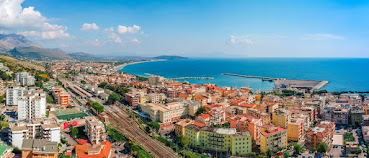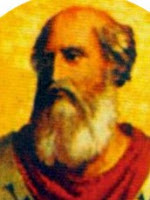Musician could make oboe sound like the human voice
Giuseppe Sammartini, a brilliant oboist and composer during the late baroque and early classical era, was born on this day in 1695 in Milan.
Sammartini was hailed as 'the greatest
oboist the world had ever known'
The musician - named Giuseppe Francesco Gaspare Melchiorre Baldassare Sammartini in full - spent many years living and working in London, where he was hailed as ‘the greatest oboist the world had ever known.’ He also worked as a music master for Frederick, Prince of Wales and his wife Augusta, when Frederick was heir to the British throne. Frederick was the eldest son of King George II, but he died before his father. Frederick’s own eldest son later became King George III.
Giuseppe’s younger brother, Giovanni Battista Sammartini, also became a well-known composer and oboe player. The brothers had both been given oboe lessons by their French father, Alexis Saint-Martin.
Giuseppe Sammartini, who could also play the flute and recorder, was the oboe player at a church in Milan in about 1717. He then became oboist at the Teatro Regio Ducale, an opera house in Milan, in 1720.
 |
| Sammartini played in the orchestra of George Frideric Handel (above) |
In the 1730s, Sammartini played in George Frideric Handel’s orchestra during productions of Handel’s operas. Performing in Arminio, he had to play very difficult music for the oboe in the Act II aria ‘Quella fiamma’.
Sammartini was judged by experts to have significantly advanced the level of oboe playing and was said to have even been able to make the oboe sound like a human voice at times.
Among his students were the English musician, Thomas Vincent and an Italian pupil, Gaetano Parenti. Sammartini also collaborated closely with the composer Joseph Haydn and played a part in the development of Haydn’s classical style.
Sammartini was skilled in the use of counterpoint and harmony and became one of the most important composers of his time. One of his first collections of music to be published in London was a set of 12 trio sonatas. After being hired as music master by Frederick, Prince of Wales, the oboist began to compose more. He was to work for the royal couple and their children from 1736 until his death and he dedicated many of his works to members of the family.
His 12 sonatas op.1 were dedicated to Frederick and his 12 trios op.3 to Augusta. He even wrote tunes for the children when they celebrated birthdays.
 |
| Frederick, Prince of Wales employed Sammartino as music master |
Sammartini returned to Italy for his sister, Madalena’s, wedding in 1728 but he spent most of his later life in England. He died in Prince Frederick’s household in London in November 1750.
Most of Sammartini’s concertos and overtures were published after his death and they received wide acclaim.
His brother, Giovanni Battista Sammartini, who spent most of his life in Milan and was nicknamed Il Milanese, was a prolific composer, producing an estimated 2,000 works. He has been described as ‘the true father of the symphony’.
Travel tip:
Teatro alla Scala - usually known simply as La
Scala - is Milan's best-known theatre
Milan, where Sammartini was born and started his career, has a wealth of theatres with a long tradition of staging different entertainment. Teatro Litta next to Palazzo Litta in Corso Magenta is believed to be the oldest theatre still in existence in the city. Teatro Dal Verme in San Giovanni sul Muro opened in 1872 and the Piccolo Teatro in Via Rivoli opened in 1947. Milan’s most famous theatre, Teatro alla Scala, in Piazza della Scala, across the road from Galleria Vittorio Emanuele II, was first inaugurated in 1778.
Travel tip:
The Teatro Regio Ducale used to be housed in
a wing of Milan's Palazzo Reale
The Teatro Regio Ducale, where Giuseppe Sammartini played in the orchestra at the beginning of his career, was the main opera house in Milan from 1717 until 1776, when it burnt down. Many famous composers and their operas were associated with the theatre, which staged four premieres of operas by Mozart. The theatre used to occupy a wing of the Palazzo Reale in Milan, a building to the right of the Duomo’s façade, opposite Galleria Vittorio Emanuele II.
Also on this day:
Befana - Italy’s January 6 tradition
1819: The birth of painter Baldassare Verazzi
1907: Maria Montessori opens her first school in Rome
1938: The birth of best-selling singer Adriano Celentano



























